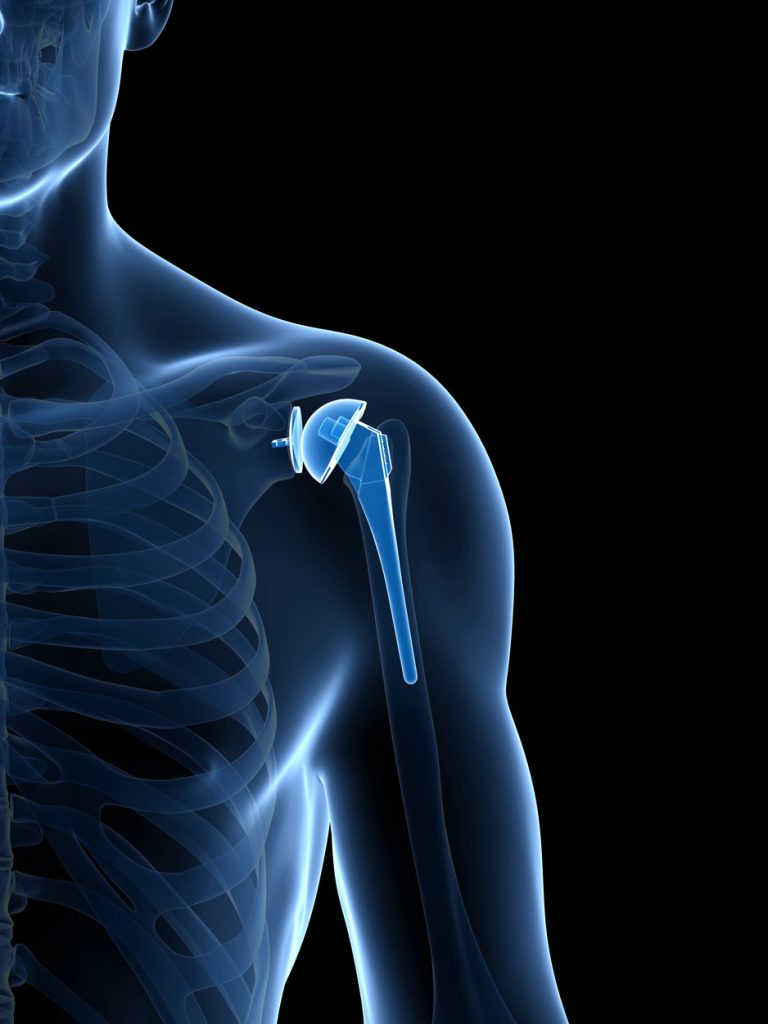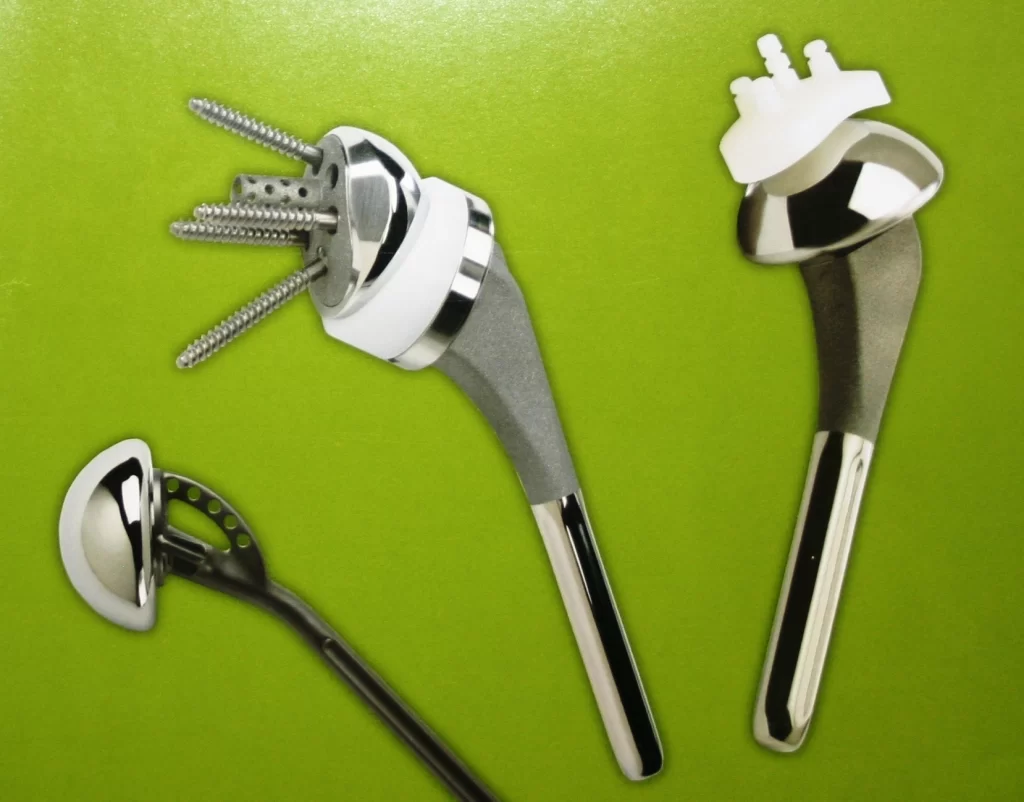Shoulder Replacement Surgery
Your shoulder is a crucial joint in your body that has more flexibility than any other joint. If you are experiencing enough pain that it hinders your ability to reach into a cabinet, disrupts your sleep, or causes other symptoms, your healthcare provider may recommend replacement surgery. This surgery can alleviate your pain and improve your ability to move.

What is shoulder replacement surgery?
shoulder replacement, or total shoulder arthroplasty, involves removing parts of the shoulder joint and replacing them with artificial implants. This procedure effectively alleviates severe pain and stiffness caused by end-stage arthritis, while also improving the individual’s range of motion and mobility.
Shoulder arthritis occurs when the protective cartilage covering the shoulder bones deteriorates. In a normal shoulder, this cartilage allows the bones to move smoothly. However, when the cartilage wears away, the bones rub against each other, leading to increased friction and damage. This bone-on-bone contact can be very painful and limit mobility. To address this, artificial replacement surfaces can be surgically implanted, restoring pain-free movement, strength, and functionality.
Why You’d Need It Replaced
If you experience a condition that results in discomfort and difficulty in utilizing your arm, you may be required to undergo a procedure to address this issue.
- A severe shoulder injury, such as a fractured bone.
- Severe arthritis
- A torn rotator cuff
In the beginning stages, your doctor will most likely attempt to alleviate your condition by prescribing medications or suggesting physical therapy. Should these initial approaches not yield satisfactory results, the next course of action may involve the consideration of a surgical procedure.
What different kinds of shoulder replacements are there?

Your surgeon will discuss with you the type of shoulder replacement that may be required. There are four choices available for consideration.
- Hemiarthroplasty involves the replacement of only the ball and stem, with the stem being connected to the ball and able to move within your existing socket.
- Resurfacing Hemiarthroplasty is a procedure that entails the replacement of the surface of the humeral head joint with a type of prosthesis resembling a cap, without the inclusion of a stem.
- The procedure called Anatomic Total Shoulder Replacement involves replacing the arthritic joint with a metal ball that has been polished and is connected to a stem on the arm side. Additionally, a plastic cup is used to replace the glenoid socket.
- Stemless Total Shoulder Arthroplasty is a type of shoulder joint replacement surgery that eliminates the need for a stem by directly attaching a metal ball to the upper arm bone, thus preserving more bone.
- The reverse total shoulder replacement involves reversing the position of the joint. This means that the metal ball, which was originally located in the glenoid socket, is now placed there, while a plastic cup is attached to the stem and moved to the upper arm bone (humerus).
Is Shoulder Replacement for You?
The choice to undergo shoulder replacement surgery should involve collaboration among you, your loved ones, your primary doctor, and your orthopedic surgeon.
There are various factors that may lead your doctor to suggest shoulder replacement surgery. Individuals who tend to experience positive outcomes from this surgical procedure often possess:
- Intense shoulder discomfort that hinders routine tasks like accessing a cabinet, getting dressed, using the restroom, and cleaning oneself.
- The pain experienced while at rest ranges from moderate to intense, potentially causing sleep disruptions.
- Shoulder experiencing limited movement and/or muscular strength deficit.
- If other forms of treatment such as medications that reduce inflammation, injections of cortisone, or physical therapy do not lead to significant improvement.

How long does shoulder replacement surgery take?
The surgery typically lasts around three hours, which includes the time needed for administering anesthesia. In most cases, a general anesthetic is used, although a local anesthetic can be used to numb the entire arm. This is achieved by blocking the nerves that originate from the neck through a procedure called a scalene block. Before the operation, it is necessary for most patients to receive medical approval from their family doctor. Additionally, all patients are required to donate a unit of blood a few weeks prior to the surgery, which can be transfused back to them if necessary after the procedure.
Recovery
It is probable that you will be discharged on the same day to return home. Your shoulder may experience swelling and discomfort. Your physician will provide medication to alleviate the pain. The use of cold compresses can assist in managing the swelling.
Initially, a brace will be utilized to immobilize your arm. Shortly after, you will commence physical therapy to regain functionality in both your arm and newly replaced shoulder.
After you are discharged, you will continue to receive physical therapy. The exercises you will engage in will gradually enhance the functionality of your new joint. It is important not to hurry the process, as it may take approximately 4 weeks before you are able to lift anything heavier than a glass of water.
During the majority of your recovery, your arm will be placed in a sling. It might take approximately six weeks or longer before you are able to resume driving.
During the year following your surgery, you will be required to visit your doctor multiple times for follow-up appointments in order to assess the progress of your recovery.
Treatment in Türkiye:
The medical staff of surgical teams, doctors, and consultants at REHABTÜRK can provide the best treatment options and free consultations, striving to stay up-to-date on the latest medical technologies and methods.

